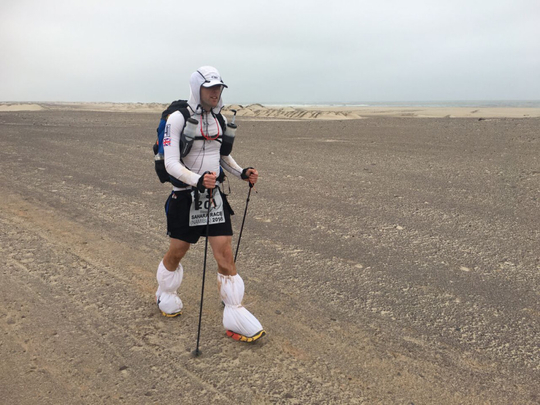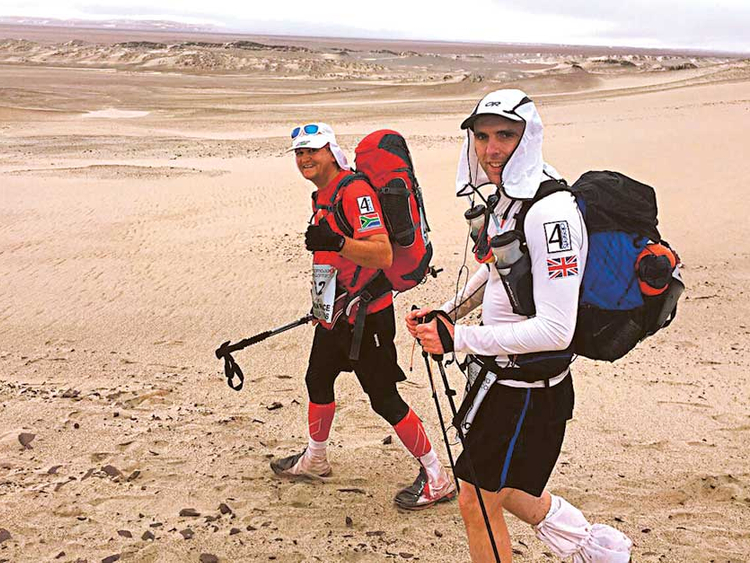
Dubai: A breakthrough app called Ascot that promises to help people with little or no vision walk without assistance could soon be available on smartphones.
Simon Wheatcroft, a visually-impaired sports enthusiast from the UK, developed Ascot in collaboration with IBM navigational technology.
On May 1 this year, 32-year-old Wheatcroft completed a 90-mile ultramarathon in the Namib desert without a human guide. He used a prototype of the Ascot app to navigate the desert. He also participated in the Boston Marathon in February this year using the same prototype.
The app’s price is still under wraps.
Maged Wassim, Vice-President, IBM Cloud, MEA, told Gulf News: “We’re happy for Simon’s success and hope that he continues to champion this app globally.”
Wheatcroft, a marathon veteran, who ran the Boston and New York marathons in 2014 with the help of guides, is thrilled..
“Technology is a great leveller and I think it is really fantastic I could compete independently,” he told Gulf News in an exclusive phone interview from UK.
Wheatcroft, who was diagnosed with retinitis pigmentosa, a genetic disorder that causes progressive blindness, lost most of his vision by the age of 17. The only time he was unable to complete a task was when he decided to propose to his girlfriend atop a mountain in California. “I had to abandon the ascent as the crevices and cracks were too deep, and propose to her midway,” he said.
The proposal was accepted, but since then Wheatcroft decided never to quit and began training on short runs in empty fields; soon he began running on roads. Though he kept colliding into lampposts and people walking their dogs, he never gave up. “The biggest challenge was mental and I had to convince myself I could do it,” said Wheatcroft, who eventually turned professional marathoner six years ago.
Prior to developing his own app, Wheatcroft used professional guides and Runner’s pro and Google glass apps.
“Prior to this, there were no apps specifically designed for the blind. “I was using Runkeeper which allowed me to map out a route, track my speed, and receive audio signals that informed when I needed to take a left or right turn,” said Wheatcroft.
He contacted IBM, which already had the Runkeeper app run on the IBM Cloud. “The invited me to visit the Bluemix Garage in London, its developer space, where I pitched the engineers there an idea for an app for visually impaired runners. IBM quickly came on board.”
Wheatcroft worked on a pilot that offered low-noise navigation. “I wanted the app to use GPS, but did not want elaborate directions, just beeps to indicate I had strayed in the wrong direction and beeps to guide me back,” said Wheatcroft, who has also worked in the IT industry for 10 years. He also worked on artificial intelligence projects prior to dropping out because of his visual impairment.









